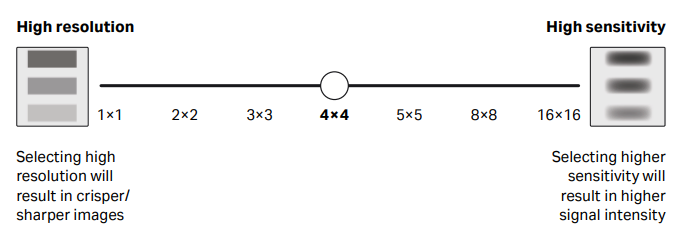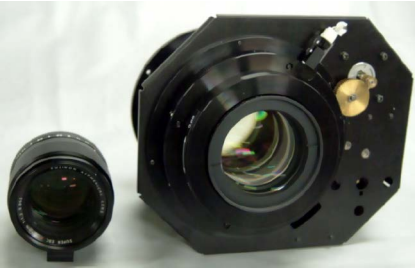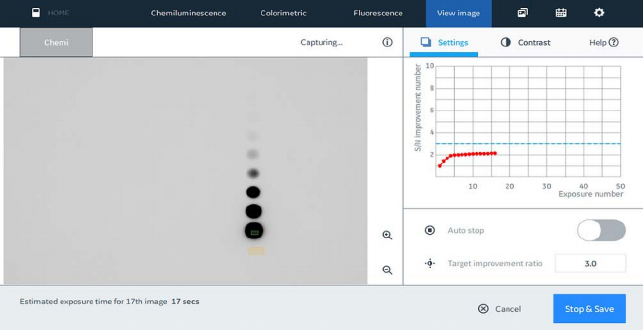Digital charge-coupled device (CCD) imagers have become a common sight in life science research labs today- for their ease of use and increasingly better performance in sensitivity and resolution. With so many imaging options to choose from, this article can help in understating a CCD imager better so you can make the right choice for your lab.
A CCD is a light-sensitive silicon chip often used in digital camera systems. First introduced in the late 1960s by Bell Labs, the CCD chip absorbs light and “moves” the electrical charge from the device to an area where it can be converted into a digital value. CCD technology has been the driving factor behind the shift from photosensitive films to the digital imagers now used for Western blot chemiluminescence or fluorescence detection and imaging.
Imagine the CCD chip as an array of buckets (pixels) that collect rainwater (photons). Each bucket in the array is exposed for the same amount of time to the rain. The buckets fill up with a varying amount of water. Measurement is initiated by pouring water into an empty bucket in the adjacent row. The buckets in this row transfer their water down to a final bucket where it is finally measured.
Likewise, as electric charge fills up the pixels, it is transferred to the serial register and finally read by converting the charge into a number that can be understood by the computer (Fig 1).
Additionally, to reduce noise, Amersham ImageQuant 800 systems have a patented CCD technique developed by Fujifilm to improve the readout rates of electrons.
Fig 1. Light transfer process in a CCD chip.
CCD is a type of image sensor that is used in digital imagers like the Amersham ImageQuant 800 and ImageQuant LAS 500. The camera in your cell phone uses a different type of sensor called CMOS (complementary metal-oxide semiconductor). Both these sensors convert light to electrons and read the charge; the main difference between the two lies in the way charge is read.
A CCD transports the charge across the chip and reads it at one corner of the array. An analog-to-digital converter (ADC) then turns each pixel's value into a digital value by measuring the amount of charge at the corner pixel and converting that measurement to binary form that can be read on the computer. CMOS devices, on the other hand, use transistors at each pixel to amplify and move the charge using more traditional wires (Fig 2).
Because of the way signal is read, CCD sensors create high quality, low noise images, especially for longer exposure times in low light applications such as chemiluminescence. The noise in CMOS chips is higher than in CCD chips (as signal is amplified at each pixel) and therefore not suitable for chemiluminescence imaging. CMOS chips also have lower light sensitivity—have you noticed how nighttime images taken on your cell phone are not of great quality? CMOS chips are, however, great for short exposures as you click a picture on your cellphone in bright daylight, or in a fluorescent microscopy application.
Amersham ImageQuant 800 systems come equipped with an 8.3-megapixel CCD chip that is a good choice for imaging applications with long exposure times, such as chemiluminescence or weak signals from fluorescence.
Fig 2. CCD chips vs CMOS chips.
What is “Binning” and how does it affect resolution and sensitivity? Can I get images that are ‘not binned’ in the Amersham ImageQuant 800 imager?
Another advantage of CCD vs CMOS detectors is the possibility to perform fast, on-chip binning. Binning is a method of combining several pixels into a larger pixel during read-out of the CCD chip. The larger light-receiving area of a combined pixel enhances sensitivity.
Amersham ImageQuant 800 is capable of seven different binning modes, including no binning (1×1), 2×2, 3×3, 4×4, 5×5, 8×8 and 16×16, which is supported by the lens (Fig 3).
The most commonly used binning option is set as default for different imaging modes in both upper and lower tray positions (Fig 4).
Higher binning settings increase sensitivity but can compromise picture quality. By choosing the “No Binning” option on Amersham ImageQuant 800 it is possible to achieve higher resolution and better separation of close bands when this is a requirement for your experiment. Figure 5 shows how Amersham ImageQuant 800 can resolve bands on an electrophoresis gel that are only 0.5 mm apart.
Furthermore, with the new SNOW imaging mode on the Amersham ImageQuant 800, dynamic range can be extended without high binning options, further helping to achieve good sensitivity without compromising resolution.
Fig 3. Binning options on the Amersham ImageQuant 800 control software.
Fig 4. Default binning options on the Amersham ImageQuant 800.
Fig 5. Colorimetric imaging with Amersham ImageQuant 800 imager results in high-resolution images for the most demanding applications. The zoom in of the Coomassie™ stained gels shows that it is possible to resolve bands on a gel which are only 0.5 mm apart. To be able to differentiate these bands was critical for research on self-cleaving tags.
At the heart of an imaging system is the lens. The lens collects and focuses the incoming light onto the CCD chip. Designing the right lens for an application depends on a number of factors, including F number.
The F number refers to the size of the aperture—the opening that allows light into the lens (Fig 6). The smaller the number, the wider the aperture. The wider the aperture, the more light is collected and the greater the sensitivity. For low-light applications such as chemiluminescence, a wide aperture will produce the best results.
Fig 6. Aperture comparison—a lower F number indicates wider aperture, letting in more light.
Amersham ImageQuant 800 uses a proprietary Fujifilm™ lens with F 0.74 (calculated for infinite distance). This is designed specifically to enhance sensitivity and collect more light. The glass material used in the Fujifilm lens allows for up to two times higher transmittance of light (depending on wavelength), making it excellent for chemiluminescence imaging (Fig 7 and 8).
Fig 7. The use of new glass lens material in Amersham ImageQuant 800 has improved transmittance compared to previous Amersham imagers, particularly in the chemiluminescence wavelength range around 420 nm.
Fig 8. Left: FUJINON XF 56 mm F1.2 R Lens used for regular photography. Right: Fujifilm lens used inside CCD Imager.
Zoom lenses provide the ability to zoom in and are convenient for imaging small objects. The ability to zoom is made possible by the many pieces of glass in the lens. Zoom lenses have higher F-stop numbers and smaller apertures compared to fixed lenses.
Fixed lenses cannot zoom and are designed to pass as much light through the lens as possible. There is minimal glass in a fixed lens, so light can be transmitted efficiently.
Zoom lenses have more flexibility but have smaller apertures and are not as sensitive as fixed lenses. The Fujifilm lens in the Amersham ImageQuant 800 combines fixed-lens construction with an extra-wide aperture, making it perfect for low light chemiluminescence applications. Capture area can be adjusted if needed before imaging via the control software.
With Amersham ImageQuant 800, yes you can. Normally, because of the way CCD imagers are designed to collect light, imaging multiwell plates results in artifacts or “shadows” caused due to the light reflection within the wells. To avoid this, Amersham ImageQuant 800 can be fitted with the NP Lens accessory (Fig 9) that eliminates parallax effects and allows for imaging multiwell plate within the imager (Fig 10).
Fig 9. Use NP lens to avoid optical artifacts (also called parallax errors). This also avoids shadows caused by wells of the multiwell plates.
Fig 10. A chemiluminescent solution (Amersham ECL Select Western Blotting Detection Reagent, 100 μL per well) in a transparent 96-well plate (Corning™) shows that the NP lens enables artifact-free imaging. Distortions and obscured imaging, and subsequently higher variation in the analysis, is evident in corner wells without the NP lens.
What is SNOW detection mode on the Amersham ImageQuant 800 and how is it different from other imaging modes such as Auto or Manual?
ImageQuant 800 is equipped with the SNOW imaging option, a novel exposure mode, which allows users to achieve high sensitivity and unmatched image quality. Before the SNOW imaging mode was developed, exposure times in imaging systems had been set to either avoid saturation as in traditional Auto modes (e.g., high expression proteins) or maximize faint signals, limiting the dynamic range. Additionally, the variance of chemiluminescence signals over time often requires time-consuming optimization and analysis of images in time series.
In blots where there are both high and low signal intensity bands, choosing an exposure time that visualized the low signal intensity bands and the high-signal intensity bands without saturation can be challenging and many times limited by the dynamic range of the CCD imager.
SNOW detection mode captures several images at shorter exposure times, thereby avoiding saturation, and averages these images in real time to reduce noise. Users can follow the progress as the image updates continuously. The signal-to-noise ratio improvement for your selected region of interest is also updated in real time. Furthermore, the SNOW imaging mode can be set to stop when the maximum signal-to-noise ratio is achieved (Fig 11).
Fig 11. Observe how image quality improves in real time on Amersham ImageQuant 800 system in SNOW exposure mode.
READ MORE ABOUT SNOW IMAGING MODE HERE
Key terminology:Full-well capacity: amount of charge an individual pixel can hold before becoming saturated.Noise: Undesirable signal components found in every electronic system are collectively called “noise.” Reducing noise increases the signal-to-noise ratio, which is important for low-light applications like chemiluminescence. Besides reducing noise by good camera electronics, sufficient cooling and proper CCD calibration, Amersham ImageQuant 800 uses SNOW imaging technology to further reduce noise.Dynamic range: The dynamic range of a CCD is the range over which the camera gives a linear response to signal; that is, the range over which the camera can record both high- and low-intensity signals. A wider dynamic range will have more flexibility in quantitation of both low- and high-abundance proteins in a single image, such as in SNOW detection mode.










